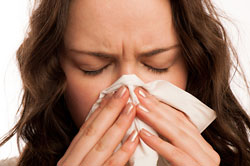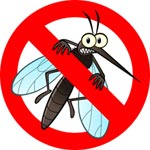How To Prevent The Common Cold And Flu Virus

Even though we are more than a decade into the 21st century, scientists have still not discovered a cure for the common cold. There are more than a hundred varieties of the rhinovirus, or the common cold, and researchers just recently disclosed there may actually be as many as two hundred cold viruses. In addition, most people get at least two colds a year and one in five Americans comes down with the flu.
The sheer number of different cold viruses is the reason people keep catching colds every season. On average, Americans will succumb to three to four colds per year. Children on average will catch six rhinovirus infections per year. This explains why people who have kids or spend a lot of time with kids have an increased risk of catching colds. There are, however, many different ways to prevent the transmission of the common cold and flu virus.

Although a cure has not been found, researchers have learned plenty about how cold viruses spread. Coughing and sneezing are still the top ways of spreading a cold to someone else. Breathing in the germs from your cough and sneeze can lead to transferring your cold to another person. It should be noted that the rhinovirus can survive on doorknobs, table tops, shopping cart handles and other surfaces for 24 hours or more.
The rhinovirus can also be transmitted to others by touching contaminated surfaces, shaking hands and personal contact with someone. The two places that viruses most easily enter your body are through the eyes and mouth. That means if you get a cold virus on your hands, then touch your nose or eyes, the cold virus will quickly reach nasal passages where they take hold and begin multiplying.
While it may seem obvious that the way to prevent a cold or flu virus from being transmitted is to just keep your hands away from your eyes and nose, most people rub their eyes or touch their noses without even thinking about it. The more practical approach is to wash your hands frequently. If soap and water aren’t available when you need it, use a hand sanitizer with at least 60% alcohol content as another option.
Make sure you always clean and disinfect surfaces that are touched often, such as countertops, desks, doorknobs, handles, phones, toys and even computer keyboards. This will help slow down the spread of germs.
You might also want to consider getting the flu vaccination prior to cold and flu season. It is good to get vaccinated in early fall, since it takes two weeks for the protection to begin. Although the vaccine won’t stop you from catching colds, it can guard against certain flu strains that experts anticipate being common that year. The vaccine can also make your symptoms milder if you do become sick.
Some additional ways to help you get through the cold and flu season is to take extra precautions during the months of September and May when viruses are more prevalent. It is also best to take extra precautions if you are older than 65, take medicine that affects your immune system and if you are around children younger than two, since cold and flu viruses can hit these groups of people the hardest.
Research has also demonstrated that getting a good night’s sleep may enhance your defense against colds and possibly even flu viruses, as well as boost your immunity. In a 2009 experiment at Carnegie Mellon University, it was noted that the more sleep you get and the more deeply you sleep, the better your chances are for fighting off colds. In addition, getting rest while you are sick could also shorten your recovery time. Not only is it best to stay home from work to rest when you are sick, it will also prevent your germs from spreading to other people.
An in-depth study further noted that maintaining a positive outlook on life may also help bolster the immune system. According to research, people who were generally happy, lively, and calm were better able to fight off both cold and flu viruses than people who were anxious, hostile or depressed.
You might also be interested in...
-
 10 Cheap Activities For Family Fun Night
10 Cheap Activities For Family Fun Night
-
 8 Habits that Could Be Hurting Your Marriage
8 Habits that Could Be Hurting Your Marriage
-
 The Benefits Of Coconut Milk
The Benefits Of Coconut Milk
-
 Top Tips For Bone Health For Women
Top Tips For Bone Health For Women
-
 Caring for Both Your Children and Your Parents
Caring for Both Your Children and Your Parents
-
 Debunking Common Relationship Myths
Debunking Common Relationship Myths
-
 Family Life Insurance for Young Families
Family Life Insurance for Young Families
-
 Five Expensive Home Improvement Projects that Won’t Boost Value
Five Expensive Home Improvement Projects that Won’t Boost Value
-
 Five Home Improvement Projects that Pay Off
Five Home Improvement Projects that Pay Off
-
 Health Benefits Of Cashews
Health Benefits Of Cashews
-
 Help Your Aging Parents Prepare for Retirement
Help Your Aging Parents Prepare for Retirement
-
 How to Get the Grandkids to Help with Chores
How to Get the Grandkids to Help with Chores
-
 How to Prepare a Family History for the Younger Generations
How to Prepare a Family History for the Younger Generations
-
 Is Herbal Medicine The Way To Go
Is Herbal Medicine The Way To Go
-
 Natural Mosquito Repellants
Natural Mosquito Repellants
-
 Planning Ahead: Family Life Insurance
Planning Ahead: Family Life Insurance
-
 How To Prevent The Common Cold And Flu Virus
How To Prevent The Common Cold And Flu Virus
-
 Taking Care Of The Caregiver
Taking Care Of The Caregiver
-
 Ten Best Fruits, Vegetables, and Herbs Families Can Grow at Home
Ten Best Fruits, Vegetables, and Herbs Families Can Grow at Home
-
 Ten Tips for Successful Single Parent Families
Ten Tips for Successful Single Parent Families
-
 Top 10 Health And Safety Tips For Fall And Winter
Top 10 Health And Safety Tips For Fall And Winter
-
 Top Ten Household Safety Tips
Top Ten Household Safety Tips
-
 Why All Women Need Life Insurance Too
Why All Women Need Life Insurance Too
-
 Why you should go on vacation
Why you should go on vacation
-
 Who Should Be Your Beneficiary
Who Should Be Your Beneficiary
-
 The Benefits Of Vitamin B
The Benefits Of Vitamin B
-
 5 Reasons To Eat Homemade Chicken Noodle Soup
5 Reasons To Eat Homemade Chicken Noodle Soup
-
 6 Healthy Breakfast Ideas
6 Healthy Breakfast Ideas
-
 5 Tips To Prepare For Allergy Season
5 Tips To Prepare For Allergy Season
-
 Unusual Ways To Keep Your Mind Sharp
Unusual Ways To Keep Your Mind Sharp
-
 Food That Isn’t As Healthy As You Think
Food That Isn’t As Healthy As You Think
-
 4 Things That Are Secretly Killing Your Healthy Lifestyle
4 Things That Are Secretly Killing Your Healthy Lifestyle
-
 Questions You Need To Ask At Your Next Checkup
Questions You Need To Ask At Your Next Checkup
-
 How To Make A Comeback After An Illness
How To Make A Comeback After An Illness
-
 4 Benefits Of Water Most People Don’t Know
4 Benefits Of Water Most People Don’t Know
-
 Heartfelt Advice To Avoid Heart Disease
Heartfelt Advice To Avoid Heart Disease
-
 What Is Respite Care And Are You One Of Millions Of People That May Need It?
What Is Respite Care And Are You One Of Millions Of People That May Need It?
-
 Three Tricks To Healthy Eating
Three Tricks To Healthy Eating
-
 How Important Is Estate Planning?
How Important Is Estate Planning?
-
 5 Backyard Grill Safety Tips
5 Backyard Grill Safety Tips
-
 Combining Insurance After Marriage: Updating Your Life and Health Policies
Combining Insurance After Marriage: Updating Your Life and Health Policies
-
 Top 5 Crazy Food Options at Globe Life Park, Home of the Texas Rangers
Top 5 Crazy Food Options at Globe Life Park, Home of the Texas Rangers
-
 4 Dangers of Owning an Exotic Pet
4 Dangers of Owning an Exotic Pet
-
 4 Ways Life Insurance Helps Families Plan for the Future
4 Ways Life Insurance Helps Families Plan for the Future
-
 Why Young Families Need Life Insurance
Why Young Families Need Life Insurance
-
 Reasons to Consider Travel Insurance
Reasons to Consider Travel Insurance
-
 3 Ways to Know It's Time to Increase Your Life Insurance Coverage
3 Ways to Know It's Time to Increase Your Life Insurance Coverage

 Insurance products are available in New York from
Insurance products are available in New York from  Insurance products are available in your state from
Insurance products are available in your state from 




















































